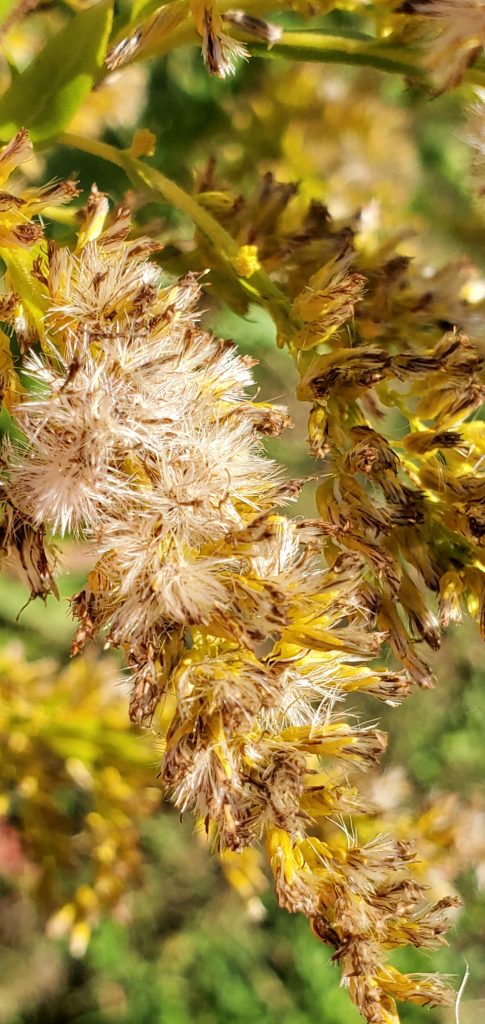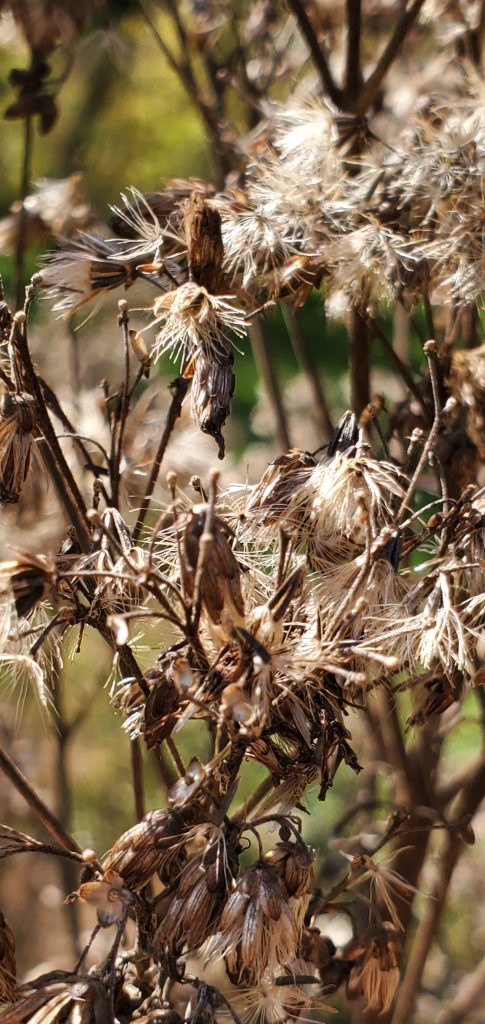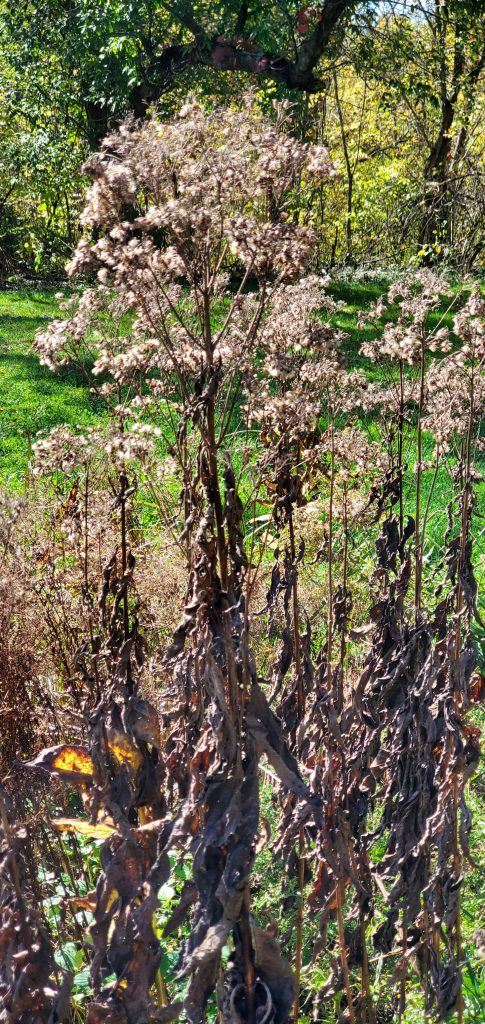The Need for Seed: Fall Flowering Plants


What happens to plants like Goldenrod (above left) and Joe Pye Weed (above right) during winter months? (Photos: Amy Roell)
November is typically a time when nature seems to slow down. The hustle and bustle of the growing season during the warmer months has passed, and now animals are setting themselves up to survive the colder temperatures and decreased sunlight that comes with winter. Some animals migrate to a warmer locale; some hibernate and “sleep” through the winter; while others stay active, although their patterns change a bit because of the weather. But, what about plants? How do they make it through winter?
There are a myriad of ways plants ensure their survival. Deciduous trees and shrubs drop their leaves and go dormant for the cold weather months. Evergreen plants’ leaves have a waxy coating that prevents water loss through the leaves and are resistant to the cold. Some plants that live only one year, called annuals, create a bounty of seeds to ensure more of their kind will grow and bloom the following year.
Other plants that have a two-year life cycle, which are known as biennials, will have low, ground-hugging leaves during the first winter. The second summer or growing season will see biennials sprout up a stalk and flower, which will then create seeds for future generations. Perennial plants will become dormant through the cold weather months, storing the food for the plant in the roots below ground.
One of the largest groups of flowering plants falls into the Aster or Sunflower family, previously known as the Composite family. Locally, many Aster family plants are perennials. The old family name comes from the outstanding characteristic of the flowers that fall into this group – the flower head may look like one flower, a center surrounded by petals. In reality, each petal and each tubular section of the center (or ‘eye’ of the flower) is actually a complete flower by itself!


Both the White Snakeroot plant (above left) and the New England Aster (above right) are a part of the Aster family. Like these two plants, other members of the Aster family produce many seeds in fall. (Photos: Amy Roell)
The Aster family is the second largest family of flowers behind orchids. It contains 19,000 species of flowers worldwide. Of those, 2,687 call the United States and Canada home. This family of flowers includes favorites such as New England Asters, Daisies, Sunflowers, Goldenrod, Joe Pye Weed, White Snakeroot and many more. Several of the members have late summer or fall blooming times. This helps the migrating birds and butterflies find food sources on their long treks south. Fall blooming times also help those insects that stay around Hamilton County have food sources readily available until it turns cold.
Plants in the Aster family also produce many, many, many seeds. This abundance helps to insure that some of them will make it to good soil to grown into future plants. The majority of them though provide nutrition to birds and small mammals. The stems of the plants that remain through the winter can also provide shelter for a variety of insects too!


When preparing for winter, leave the ‘dead’ stalks of plants like Joe Pye Weed (above left) and White Snakeroot (above right). Leaving the plants be until the spring can help our local ecosystem. (Photos: Amy Roell)
As you can see, the local members of the Aster family do quite a bit of good for wildlife. If you can tolerate leaving the ‘dead’ stalks of the plants up through winter, until next spring’s growth really starts, it’s a good thing for a variety of wildlife. You’ll be providing shelter and food naturally!
—
Amy Roell
Director of Programming

